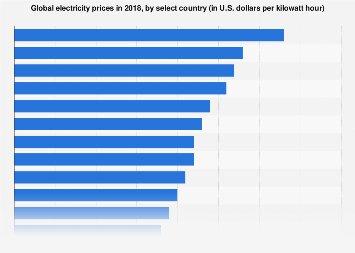For instance, pay versatility will in general expand energy interest in economies with rising wages; e.g., a family unit may purchase a bigger home or buy more energy-utilizing gadgets when its pay increments, expanding net energy use. Likewise, cross-versatility will in general redirect energy value impacts onto different merchandise; e.g., a family unit whose service charges rise may choose to diminish other consumptions, for example, eating out, as opposed to lessening energy use. Pulse Power reviews have to know before going to start new power stations. As a component of executing rate plans to support client energy effectiveness, strategy creators, utilities, and states may likewise think about choices to build straightforwardness, or permeability, of costs like charging proclamation improvements and giving electronic use and cost information to clients (National Action Plan for Energy Efficiency, 2008c).
contrast to other energy items like gas, which are normally very straightforward to clients at the hour of procurement so that below are happens

Utility costs are commonly inserted in charging proclamations that (1) are not seen until after energy is devoured and (2) may not loan themselves to straightforward comprehension of costs. As examined, above, huge energy-serious clients regularly are more cost responsive, partially because they have appointed staff or expert advisors to decipher their service charges, and may put resources into their metering, information announcing, and different techniques to make energy cost data both straightforward and connected to operational conduct and capital venture choices. Level rates. Level rates are consistent rates that don’t fluctuate by TOU, however, they are too volumetric, in that they depend on the volume of energy devoured. They are intended to create income for the utility to cover its fixed and variable expenses of administration also, its permitted pace of return. While level rates are nonpartisan as in they charge the equivalent for every unit of energy devoured, they don’t pass on the sign that the expense of power supply fluctuates by TOU. They do pass on that client bills will be in extent to utilization, and consequently, sign to clients that controlling utilization can handle costs. Slanting square rates. By making steady utilization past a base square more costly (a “block” is just a characterized measure of use, for instance, 1,000 kilowatt-hours [kWh]), clients get value flags that ought to urge them to moderate extra use. The viability of this motivating force depends, be that as it may, on clients understanding this value signal through charging explanations or different sources, furthermore, in knowing when they have surpassed their underlying square of utilization and are hence in greater cost region.
Straightforwardness issues can restrict the adequacy of this motivation
Utilities can and frequently give data to assist clients with a comprehension of these issues. Occasional or TOU rates. These rate types sign to clients that energy utilization can turn out to be more costly relying upon when it is utilized. Clients may at that point, for the model, put resources into items, for example, high-effectiveness climate control systems, that utilization less energy in more expensive seasons, or greater expense seasons of day, and might change their conduct to move utilization like dishwashing or garments drying to cheaper hours. While such impetuses are fairly circuitous and may have restricted straightforwardness without explicit client data on when or in what gadgets to diminish use, they in any case urge clients to lessen utilization at any rate on specific occasions.